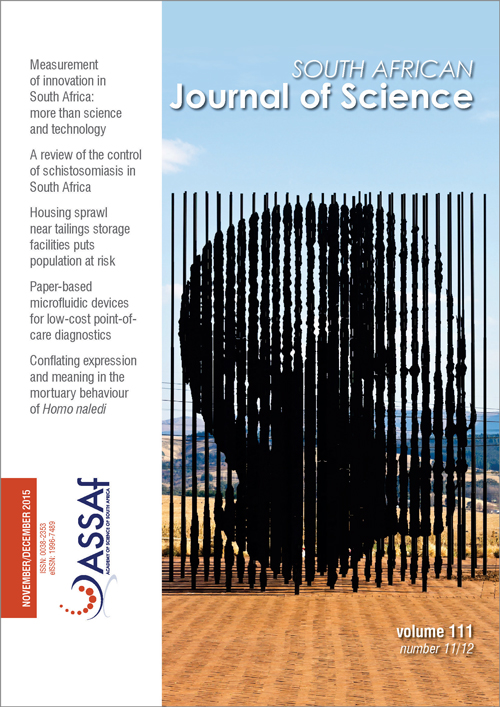A critical review of ionic liquids for the pretreatment of lignocellulosic biomass
DOI:
https://doi.org/10.17159/sajs.2015/20150083Keywords:
biomass, cellulose, biorefinery, lignin, fractionationAbstract
Ionic liquids have been the subject of active research over the course of the last decade and have in the past been touted as one of the most promising technologies for revolutionising the chemical and petro-chemical industries. The sheer abundance of potential ionic liquid structures coupled with their tuneable physico-chemical properties has endeared ionic liquids to the scientific community across a broad range of disciplines with potential applications that include pharmaceuticals, electrolytes, thermal energy storage media and liquid mirror telescopes. Within the context of a biorefinery for the production of biofuels and other bio-based products from renewable resources, the unique abilities of some ionic liquids to selectively dissolve biomass components or whole native biomass have been demonstrated. This ability has sparked extensive investigations of ionic liquids for the pretreatment of different biomass types, particularly for the production of cellulosic biofuels. However, the esoteric nature of ionic liquids persists and constructing a fundamental framework for correlating ionic liquid structures with useful applications remains a significant challenge. In addition to the above, the more practical challenges of toxicity, high costs, high viscosities, low solids loading and complex recycling are key factors hindering the wide-scale uptake of ionic liquids as pretreatment solvents in a commercial biorefinery. This critical review provides insights from academic studies and the implications thereof for elevating ionic liquids from the status of ‘promising’ to ‘commercialisable’ in the pretreatment of biomass. It is vital that key hurdles for the commercialisation of ionic liquids in the form of high costs, high viscosities, poor water tolerance, toxicity, low solids loading and recovery/recycling be addressed.
Published
Issue
Section
License

All articles are published under a Creative Commons Attribution 4.0 International Licence
Copyright is retained by the authors. Readers are welcome to reproduce, share and adapt the content without permission provided the source is attributed.
Disclaimer: The publisher and editors accept no responsibility for statements made by the authors
How to Cite
- Abstract 927
- PDF 620
- EPUB 209
- XML 248












.png)